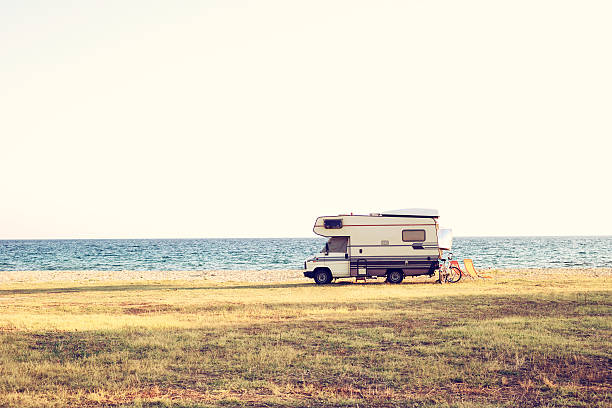Beach Tent Types And Uses For A Day Outdoors
A beach tent is a light structure that people bring to the shore for shade and comfort. It can be set up in minutes and comes in many shapes like dome, cabana, or pop up style. Each type has features that make it practical for sitting, resting, or enjoying time by the water. In this guide, you will learn about the most common beach tent designs, the materials often used, and tips on choosing one that fits your plans. This makes it easy to see how a beach tent can add convenience and fun to your day at the beach.

What Makes a Pop Up Beach Tent Convenient
A pop up beach tent features an instant setup mechanism that allows the structure to unfold automatically when removed from its carrying case. These tents utilize pre-tensioned poles and flexible materials that spring into position, eliminating the need for complex assembly procedures. The convenience factor makes pop up designs particularly attractive for families with young children or individuals who prefer quick shelter deployment. Most pop up beach tents can be erected in under two minutes, though folding them back into their compact storage form may require some practice and technique.
How Cabana Beach Tents Provide Enhanced Comfort
Cabana beach tents offer a more spacious and luxurious beach shelter experience compared to basic windscreen designs. These structures typically feature multiple walls, extended floor space, and enhanced ventilation systems to create a comfortable outdoor room. Many cabana beach tent models include features such as sand pockets for stability, mesh windows for airflow, and interior hooks for hanging accessories. The increased headroom and floor area make cabana tents suitable for extended beach stays, family gatherings, or situations where multiple people need comfortable shelter space.
Why Portable Beach Tents Matter for Travel
Portable beach tent designs prioritize compact storage and lightweight construction to accommodate travelers with limited packing space. These tents typically weigh between two and eight pounds when packed, making them suitable for hiking to remote beach locations or international travel where luggage restrictions apply. The portability factor often involves trade-offs with features such as interior space, wind resistance, or setup convenience. Quality portable beach tents utilize advanced materials and engineering to maximize functionality while minimizing packed size and weight.
Selecting a Beach Tent for Family Use
A beach tent for family use requires careful consideration of space requirements, safety features, and durability factors. Family-oriented designs typically accommodate four to eight people comfortably, with floor dimensions ranging from eight by eight feet to twelve by twelve feet. Safety considerations include secure anchoring systems, flame-resistant materials, and rounded or padded structural elements to prevent injury during active use. Many family beach tents incorporate multiple entrance points, interior organization features, and enhanced UV protection ratings to address the specific needs of parents traveling with children.
Beach Tent Features and Specifications Comparison
| Beach Tent Type | Typical Size Range | Setup Time | Weight Range |
|---|---|---|---|
| Pop Up Beach Tent | 6x6 to 8x8 feet | 1-3 minutes | 3-6 pounds |
| Cabana Beach Tent | 8x8 to 12x12 feet | 5-15 minutes | 8-15 pounds |
| Portable Beach Tent | 4x4 to 6x8 feet | 3-8 minutes | 2-5 pounds |
| Family Beach Tent | 10x10 to 14x14 feet | 10-20 minutes | 12-25 pounds |
Prices, rates, or cost estimates mentioned in this article are based on the latest available information but may change over time. Independent research is advised before making financial decisions.
Essential Considerations for Beach Tent Selection
Weather resistance capabilities significantly impact beach tent performance and user satisfaction across different coastal conditions. Wind resistance ratings, measured in miles per hour, indicate the maximum sustained winds a tent can withstand without structural failure or excessive movement. UV protection factors, similar to sunscreen ratings, determine how effectively the tent fabric blocks harmful ultraviolet radiation. Water resistance features protect occupants and belongings from unexpected rain showers or high surf spray conditions.
Setup and breakdown procedures vary considerably among different beach tent designs and directly affect user experience. Some models require multiple people for proper assembly, while others can be managed by a single person. Ground anchoring systems, including stakes, sand bags, and guy lines, play crucial roles in tent stability and safety. Understanding local beach regulations regarding tent placement, overnight camping restrictions, and environmental protection guidelines ensures responsible and legal use of beach shelter equipment.
Beach tents represent valuable investments in outdoor comfort and safety, offering protection and convenience that enhance coastal recreation experiences. The variety of available designs ensures options suitable for different group sizes, activity levels, and environmental conditions. Proper selection based on specific needs, combined with appropriate setup and maintenance practices, maximizes the utility and longevity of beach tent equipment for years of enjoyable outdoor adventures.




